How To Identify and Treat Lawn Fungus in Central Georgia
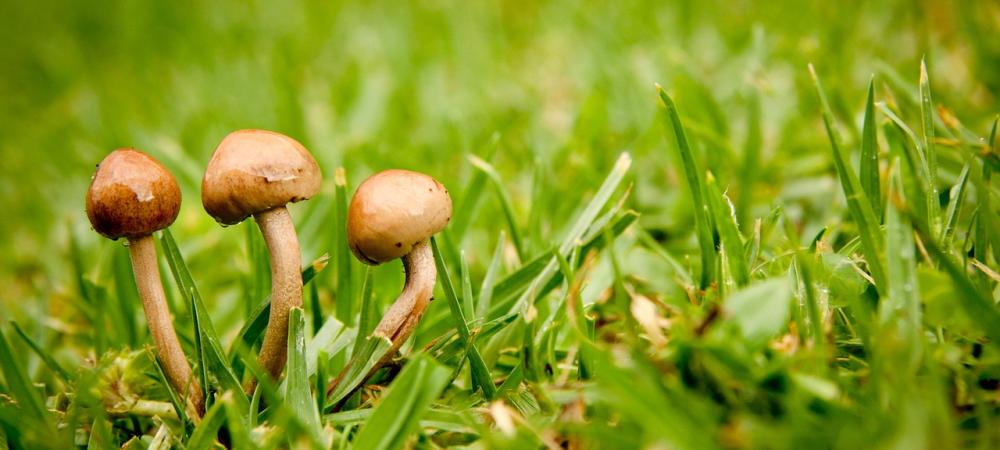
Maintaining a vibrant and healthy lawn in Central Georgia can be challenging, especially when various lawn diseases threaten its lush appearance. In this comprehensive guide, we'll delve into the most common types of lawn fungus in Central Georgia, equipping you with the knowledge to identify and effectively combat each one.
Brown Patch (Rhizoctonia spp.)
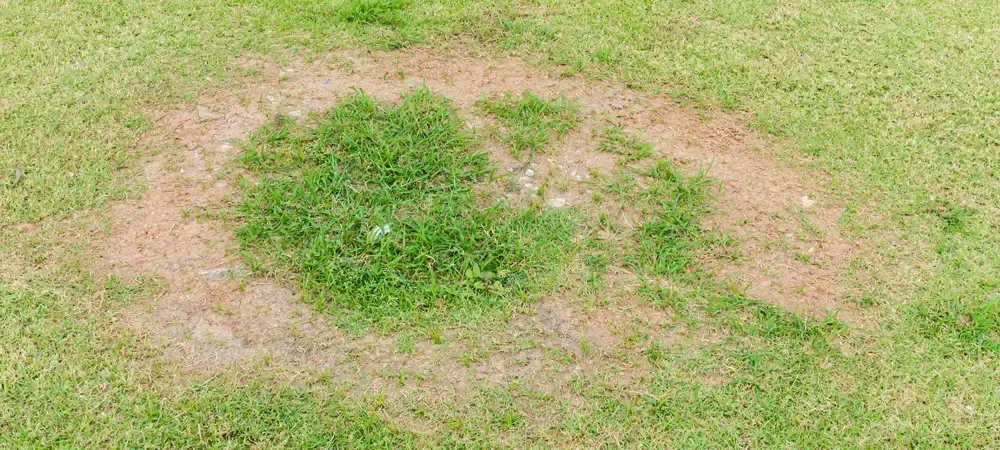
- Susceptible Turfgrasses: St. Augustinegrass, zoysiagrass, bentgrass, ryegrass, tall fescue, centipede, and bermudagrass.
- Conditions Promoting Lawn Fungus: Warm and humid weather, excess soil moisture, extended leaf wetness, and high nitrogen levels.
- Symptoms of Brown Patch: Circular patches of blighted blades of grass, brown in bermudagrass and centipede, straw-colored in St. Augustine grass.
- How to Get Rid of Brown Patch: Improve drainage, reduce nitrogen fertilization, increase mowing height, improve air circulation, use fungicides labeled for brown patch, and practice regular lawn aeration.
- Pro Tips: Monitor for circular patches with dead grass from late April to October. Adjust nitrogen levels and maintain proper soil drainage.
Dollar Spot (Sclerotinia homoeocarpa)
- Susceptible Turfgrasses: All warm- and cool-season turfgrasses, particularly tall fescues, Kentucky bluegrass, perennial ryegrass, bentgrass, centipede, zoysiagrass, and bermudagrass hybrids.
- Conditions Promoting Lawn Disease: Warm days, cold nights, dry soil conditions, extended leaf wetness, and low nitrogen levels.
- Symptoms of Dollar Spot: Small, silver-dollar-sized patches of bleached or brown grass, lesions on live blades, abundant white fungus growth during severe development.
- How to Get Rid of Dollar Spot: Deep and infrequent watering, proper nitrogen levels, regular mowing, early morning irrigation, fungicides labeled for dollar spot, and increased sunlight exposure through pruning.
Pythium Blight (Pythium spp.)
- Susceptible Turfgrasses: Annual bluegrass, tall fescue, perennial ryegrass, bentgrass, bermudagrass, centipede, zoysiagrass, and St. Augustinegrass.
- Conditions Promoting Turf Disease: Poor drainage, temperature preferences between 32°F and 90°F, and compacted soil.
- Symptoms of Pythium Blight: Small, irregular spots, water-soaked appearance, rapid turfgrass collapse, and webbing.
- How to Get Rid of Pythium Blight: Correct over-watering, apply optimum nutrients, reduce mowing frequency, improve drainage, use fungicides labeled for pythium blight, and practice regular aeration.
Helminthosporium Leaf Spot (Drechslera spp., Bipolaris spp.)
- Susceptible Turfgrasses: Perennial ryegrass, tall fescue, bentgrass, bermudagrass, zoysiagrass, and centipede.
- Conditions Prompting Turf Fungus: Warm and humid weather, poor air circulation.
- Symptoms of Leaf Spot: Small, dark spots or streaks on grass blades, thinning of severely affected turfgrass.
- How to Get Rid of Leaf Spot: Soil testing, use lightweight equipment, increase air circulation, remove excess thatch, avoid high nitrogen rates in spring, use fungicides labeled for leaf spot, and practice proper irrigation.
- Pro Tips: Conduct soil tests to identify nutrient deficiencies and use lightweight equipment to minimize turf stress.
Fading Out (Curvularia spp.)
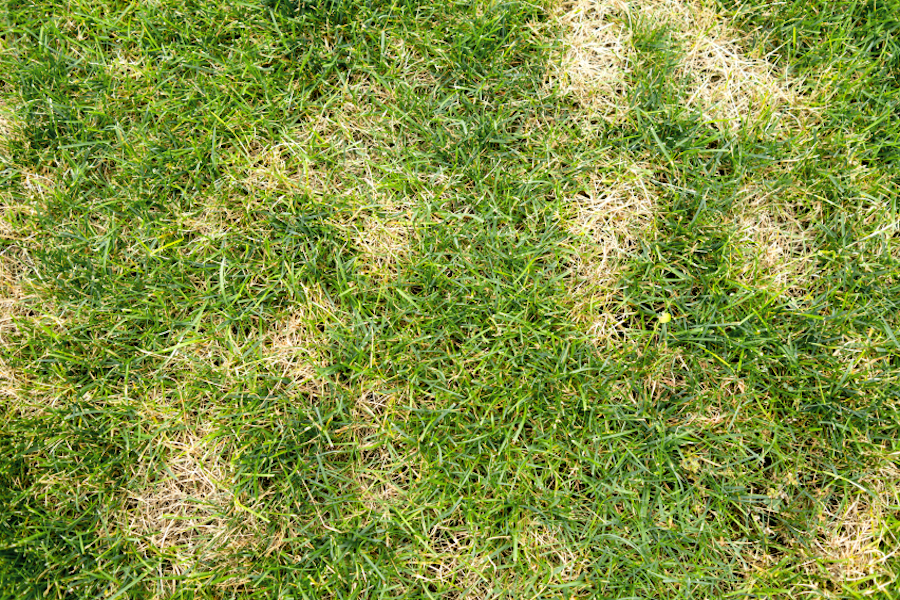
- Susceptible Turfgrasses: Perennial ryegrass, tall fescue, bentgrass, bermudagrass, zoysiagrass, and centipede.
- Conditions Promoting Lawn Disease: Weakly pathogenic unless turfgrass is predisposed to high-temperature stress.
- Symptoms of Fading Out: Vary with grass type, indefinite yellow/green dappled pattern, affected areas turn brown, gray, and die.
- How to Get Rid of Fading Out: Soil testing, mow during dormancy, remove clippings, and use recommended fungicides.
Gray Leaf Spot (Pyricularia grisea)
- Susceptible Turfgrasses: Wide host range, particularly affecting St. Augustinegrass, perennial ryegrass, bermudagrass, centipede, bentgrass, and various fescue species.
- Conditions Promoting Turf Disease: High humidity, warm temperatures, excessive thatch, poor air circulation and high nitrogen levels.
- Symptoms of Gray Leaf Spot: Small brown spots on leaves, bluish-gray oval lesions, tan to gray mature lesions with irregular margins.
- How to Get Rid of Gray Leaf Spot: Avoid medium to high nitrogen levels in late spring and mid-summer, deep and infrequent irrigation, reduce thatch, improve air circulation, use recommended fungicides , and maintain regular lawn care practices.
Fairy Ring (Mushroom-producing fungi - Basidiomycetes)
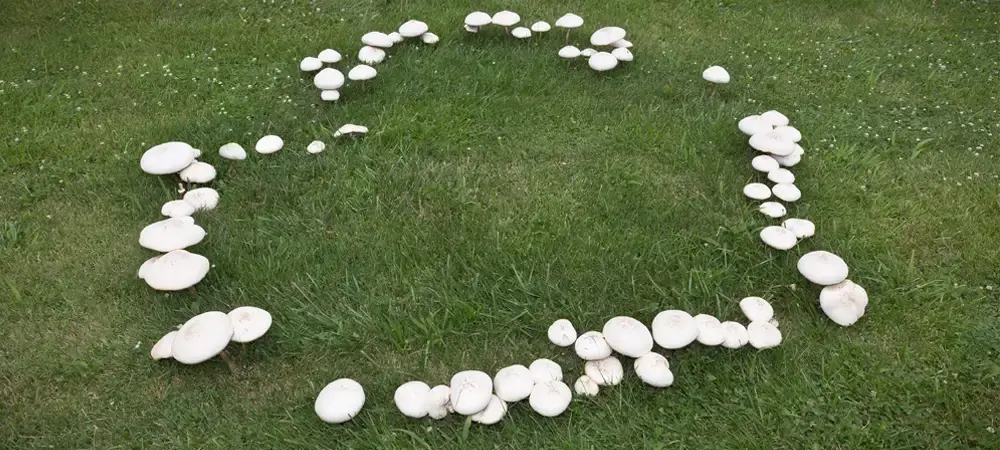
- Susceptible Turfgrasses: Particularly damaging on centipede and St. Augustinegrass in south and coastal Georgia.
- Conditions Promoting Lawn Fungus: Presence of fungus and moist, warm weather, especially after heavy rainfall.
- Symptoms of Fairy Ring: Circular bands of darker green grass, declining grass inside the ring, appearance of mushrooms around the perimeter of the circle during moist conditions.
- How to Get Rid of Fairy Ring: Spike turf in darker green areas, saturate with water to leach fungal toxins, water and fertilize declining areas, reduce thatch, and use recommended fungicides.
Take-All Root Rot (Gaumannomyces graminis)
- Susceptible Turfgrasses: Bentgrass, St. Augustinegrass, bermudagrass, and centipedegrass.
- Conditions Promoting Turf Fungus: Wet conditions, soil pH at pH 6.5 or above, less fertile and sandy soils.
- Symptoms of Take-All Root Rot: Wilted circular patches, brown or bronze-colored, dark-brown roots.
- How to Get Rid of Take-All Root Rot: Use acidifying fertilizers, apply phosphorous, potash, and minor elements, avoid lime, improve drainage, reduce thatch, and use recommended fungicides.
- Pro Tips: Maintain proper soil pH, improve drainage, and apply fungicides during wet conditions to prevent Take-All Root Rot.
Lawn Rust (Puccinia spp., Uromyces spp.)
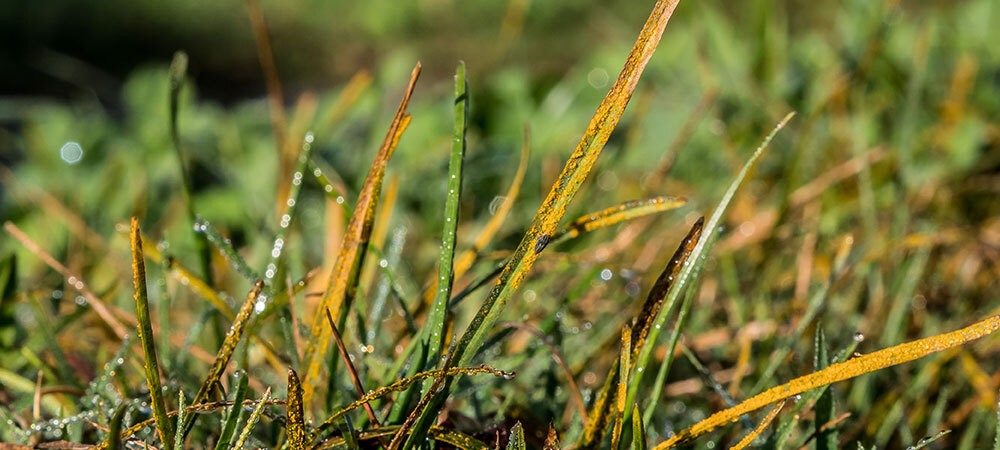
- Susceptible Turfgrasses: Kentucky bluegrass, ryegrass, bentgrass, zoysiagrass, bermudagrass, and fescue.
- Conditions Promoting Lawn Disease: Late spring through mid-summer, moist low-light areas, overcrowded grass, temperatures between 65°F and 85°F.
- Symptoms of Lawn Rust: Light-yellow flecks on grass blades, enlarging and elongating yellow areas, release of yellowish-orange to reddish-brown spores.
- How to Get Rid of Lawn Rust: Adequate nitrogen, remove clippings, reduce thatch buildup, improve air circulation, regulate irrigation, use fungicides labeled for rust, and water in the morning to prevent prolonged leaf wetness.
- Pro Tips: Regularly check for light-yellow flecks during early spring to mid-summer, and use fungicides to prevent the spread of turf rust.
Slime Mold (Various Species)
- Susceptible Turfgrasses: All turfgrasses.
- Conditions Promoting Problem: Wet, rainy weather.
- Symptoms of Slime Mold: Grass blades covered with black, bluish-gray, yellow, or tan fruiting bodies, may resemble soot on grass.
- How to Get Rid of Slime Mold: Remove slime mold by mowing, rake, and dispose, the fungi are not parasitic and will disappear in warm-dry weather conditions.
- Pro Tips: Slime mold is typically harmless, and removing it by mowing is usually sufficient. No fungicides are needed.
Ring Nematodes (Various Species)
- Susceptible Turfgrasses: Centipedegrass is highly susceptible to ring nematodes, but also bermudagrass and St. Augustine grass.
- Conditions Promoting Problem: No specific conditions, damage more noticeable during hot, dry periods.
- Symptoms of Ring Nematodes: Nematodes attack the root system, above-ground symptoms may include appearance of drought stress or nutrient deficiency.
- How to Get Rid of Ring Nematodes: Have a soil test done, send root zone soil sample to a Nematology lab to quantify and identify the nematode species. No nematicides for homeowners are available - you need to work with a professional lawn care company. Manage through proper fertilization and watering.
- Pro Tips: Regular soil testing can help identify and manage nematode issues. Adjust fertilization and watering practices for vigorous grass growth.
Powdery Mildew (Erysiphe graminis)
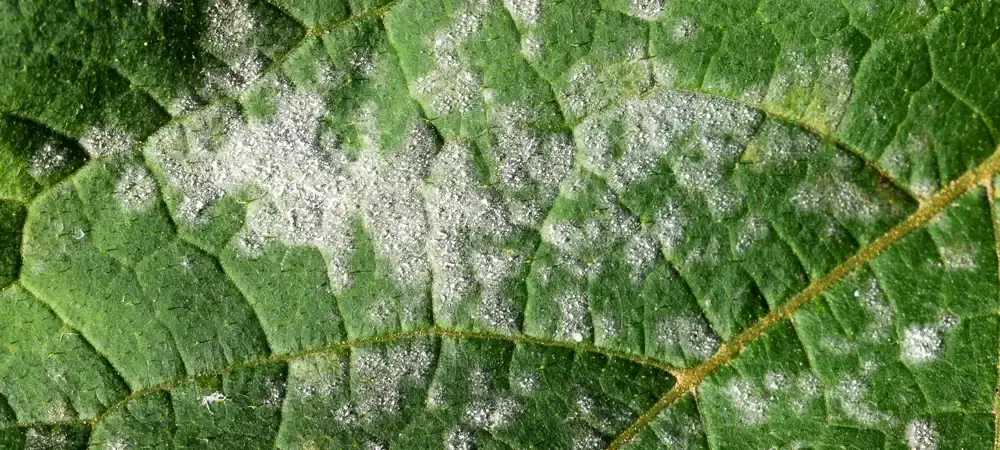
- Susceptible Turfgrasses: Kentucky bluegrass, tall fescue, and perennial ryegrass.
- Conditions Promoting Powdery Mildew Lawn Disease: Reduced air circulation, humid weather, low light conditions, and temperatures ranging between 60 and 70 degrees F.
- Symptoms of Powdery Mildew: White, powdery substance on grass blades.
- How to Get Rid of Powdery Mildew: Increase sunlight exposure, improve air circulation, use fungicides labeled for powdery mildew, and water in the morning.
Red Thread (Laetisaria fuciformis)
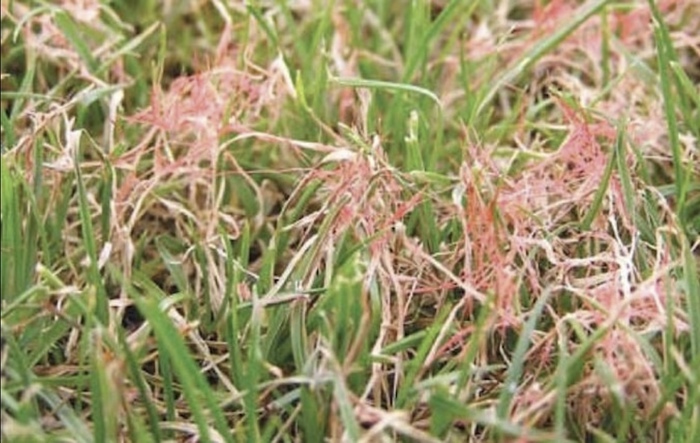
- Susceptible Turfgrasses: Kentucky bluegrass, fine fescue, and perennial ryegrass.
- Conditions: Humid conditions, temperatures between 65° to 75°F, excess moisture - especially from heavy rain in late spring or early summer.
- Symptoms of Red Thread: Pinkish-red threads or web-like structures on grass blades.
- How to Get Rid of Red Thread: Improve nitrogen levels, ensure proper lawn drainage, use fungicides labeled for red thread, and avoid mowing when the grass is wet.
Understanding the nuances of each lawn disease, including the turfgrasses they affect, the conditions they thrive in, the symptoms they exhibit, and the appropriate control methods, is crucial for effective lawn care in Central Georgia. For more details, visit the University of Georgia's Reference Guide to Turfgrass Diseases. By adopting a proactive approach and implementing targeted control measures, homeowners can ensure a vibrant and disease-free lawn throughout the seasons.
If you are having trouble identifying fungal diseases, much less reclaiming your healthy lawn, it's time to call the lawn care professionals. Our team of lawn care experts is here to help you get a lawn free of fungal diseases. Whether you are looking for lawn care in Lawrenceville, Athens, or Jefferson, our lawn technicians are here to provide you with the lawn treatments your turf deserves. Contact our team today to schedule your yard inspection!

